Gainward GeForce FX 5900XT Ultra/1100XT Golden Sample Review
Gainward GeForce FX 5900XT Ultra/1100XT Golden Sample
There's still life left in the GeForce FX 5900XT chipset, especially when you can overclock it without fear of invalidating your warranty.
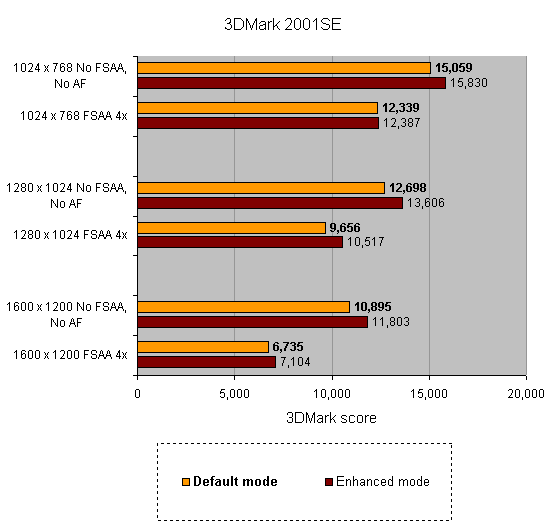
Verdict
Key Specifications
- Review Price: £126.00
Although we’d all love to be running a GeForce 6800 Ultra or a Radeon X800 XT, most of us have to live in the real world where £400 graphics cards just aren’t an option. With this in mind, it’s the sub-£150 market that a great many PC gamers are interested in – a level at which you can still expect to run the latest games, but not at the highest resolutions or with all the pretty effects turned on.
A while back nVidia pulled a very impressive bunny from the hat, in the shape of the GeForce FX 5900XT chipset. Not only did this chipset produce very respectable performance, but it also came in at a very affordable price. So impressive was this chipset that ATI chose to dump the price of the Radeon 9800 Pro in order to kill off the 5900 XT. However, Gainward has managed to push the envelope with its GeForce FX 5900XT Ultra/1100XT Golden Sample (bet you can’t say that in one breath), and with a price under £130 it represents solid value for money.
But a low price isn’t the only thing on offer here as Gainward is one of very few companies that encourages overclocking of its products. As long as you use the supplied ExperTool to overclock the card, Gainward will cover any overclocking related damage under its warranty. This is a pretty impressive feature, since most manufacturers will leave you high and dry if you choose to run a product outside of its standard configuration.
You do however have to install ExperTool manually as it is not part of the driver installation process. It’s also important that you remember to set it to run in enhanced mode or you will gain nothing.
Gainward hasn’t added any special features to this card that set it apart from any other GeForce FX 5900XT part. There’s no ViVo capability or integrated TV tuner, just a fairly standard AGP graphics card running a mid-range chipset. The only thing that really sets Gainward’s take on the 5900XT apart from the competition is the use of heatsinks on the memory chips. None of the other 5900XT cards that we’ve reviewed have sported coolers for the memory, and this gives a clear indication that Gainward is expecting you to push this card a little faster than the standard settings would suggest.
Inside the box you’ll find a DVI to VGA adapter in case you have a CRT or analogue TFT monitor that can’t accept a digital signal. There’s also an S-Video to composite video converter in case your television doesn’t accept an S-Video signal when you’re using the TV-Out functionality. Finally there’s a power splitter lurking in the box, since this card requires separate power via a Molex connector. So, there’s nothing special hiding in the packaging, but you get pretty much everything you need to get going.
So, with no special features or overly generous bundles, why would you be interested in this card from Gainward instead of all the other GeForce FX 5900XT cards we’ve looked at? Well, as already mentioned, it’s the overclocking potential that makes this Gainward a more attractive proposition than your average 5900XT card. With the supplied utility you can increase the default speeds of 390/700MHz for the core/memory to 450/750MHz – that’s a pretty significant jump, especially when you consider that Gainward will still cover the card under warranty even at the enhanced speeds.
Although I didn’t have time to run a full set of benchmarks in what Gainward refers to as enhanced mode, you will still be able to see a healthy performance increase across the board. In 3DMark 2001SE the gain was most prominent with FSAA disabled, although you can see a small increase in performance with it on as well. Moving on to 3DMark03 the increase isn’t quite as dramatic, but you still gain around 500 points, although again with anti-aliasing enabled the increase in performance is far smaller.
Moving on to Aquamark and X2: The Threat, we see a performance increase of about 4-5fps on average, but again with no FSAA. The same goes for Tomb Raider: Angel of Darkness and Halo. All in all this proves that overclocking does have an effect on performance, as long as you do it right.
The benchmark scores from the FX 5900XT Ultra/1100XT Golden Sample at standard clock speeds are pretty much in line with those seen from other FX 5900XT cards, which is what I expected to see. But what you are getting is a very attractive price point, with this Gainward retailing at a mere £126.00 inc VAT. This makes it the cheapest FX 5900XT card that we’ve seen – a fact that is even more impressive when you take the manufacturer-supported overclocking into account. In fact, the only downside to this whole story is that for only £15 more you can get a Radeon 9800 Pro.
”’Verdict”’
It might not be the fastest graphics card around, but enable the enhanced mode and you get a reasonable performance increase. If you definitely want a GeForce 5900XT card, this is the one to go for. The price is low and you can overclock it without being paranoid about damaging anything.

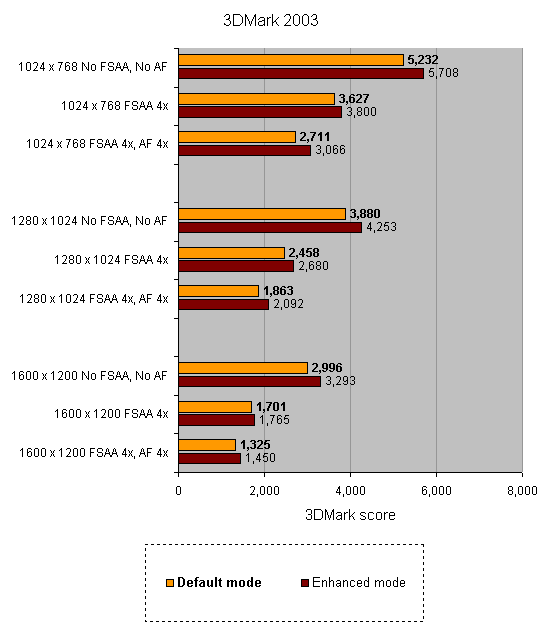
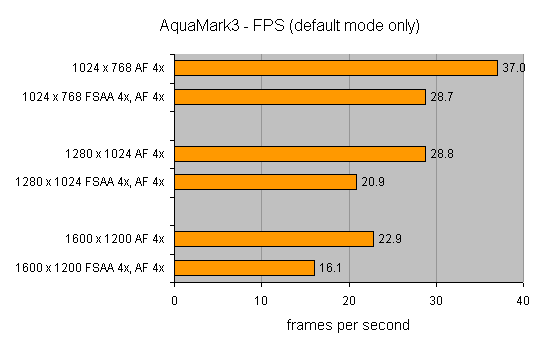
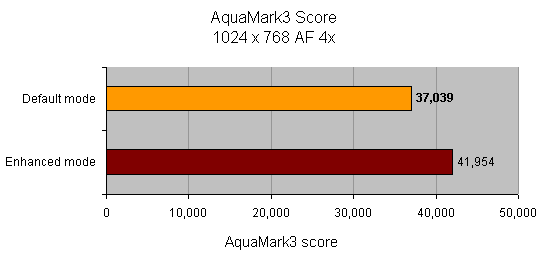
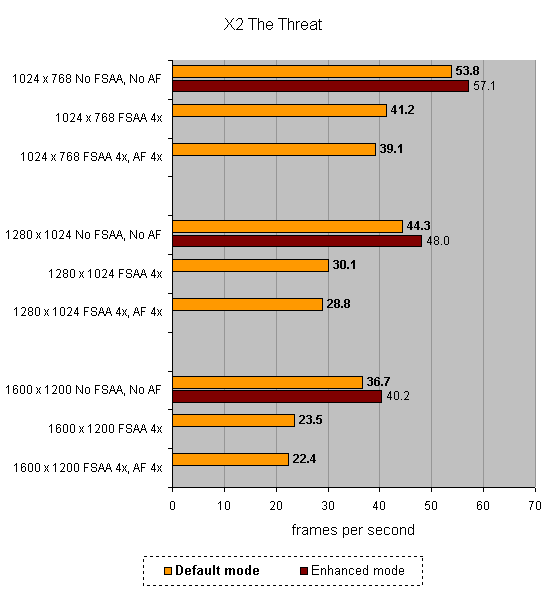
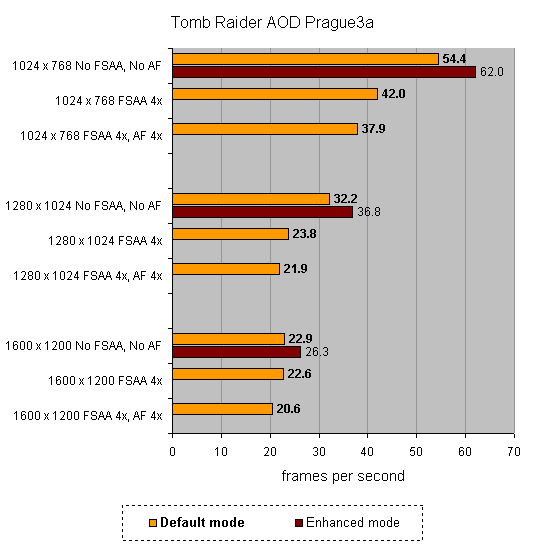
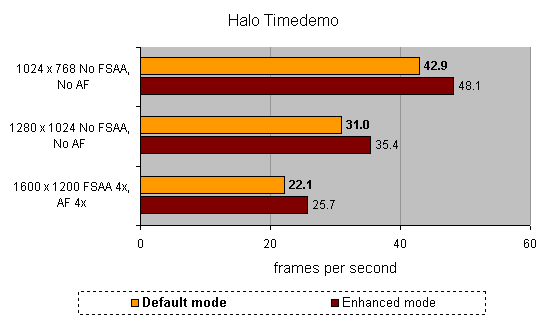
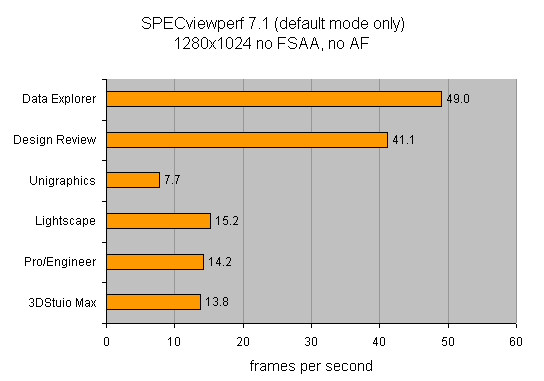
Trusted Score
Score in detail
-
Value 7
-
Features 6
-
Performance 7

